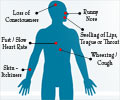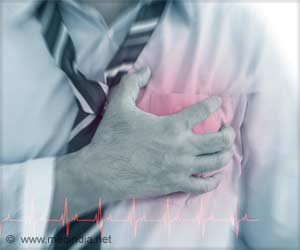Discover the causes, symptoms, and treatments for food allergies and intolerances. Unravel the mysteries behind allergic reactions and hidden triggers.
- Food allergies can cause a range of symptoms, including hives, gastrointestinal issues, itching, headaches, and more
- The exact causes of food allergies remain elusive, with theories suggesting early exposure to allergenic foods and vitamin D deficiency may play a role
- Proper diagnosis by allergists through tests like skin prick tests and blood tests is crucial for effective treatment, including immunotherapy, while distinguishing between food allergies and food intolerances is important for managing symptoms
Delayed Symptoms and Severe Reactions: Understanding Allergens and their Impact
Normally, the symptoms appear quickly enough, anywhere from a few minutes to a couple of hours after eating the item, to signal that anything is wrong. However, some allergens, such as those found in eggs, can trigger severe reactions ranging from a slight rash to anaphylaxis, a potentially fatal condition that hampers breathing and can plunge the body into shock. The body then needs an adrenaline boost. Of course, this does not happen every day, but it is cause for alarm.Elusive Causes and Prevention of Food Allergies
No research has been able to determine the exact cause of an allergic reaction to a certain type of food. There are merely theories, but we cannot rely only on them. One popular theory is that exposing toddlers to allergenic foods early on may be a beneficial preventive tactic, with the idea being that whatever you ate in your formative years can decrease your antibody reaction to them by the time you are in your teens. In other words, you're preparing your stomach for inflammation. This, however, does not explain why food allergies recur in people in their twenties and thirties. According to a study published in JAMA Network Open, 10% of adults in the United States are allergic, with half reporting that they developed at least one new food allergy as an adult that they did not have as a child (1✔ ✔Trusted SourcePrevalence and Severity of Food Allergies Among US Adults
Go to source). Some data suggest that people with low vitamin D levels and little exposure to sunlight are more prone to food allergies, although this is not enough to justify all allergic reactions. More research is needed to demonstrate that link conclusively (2✔ ✔Trusted Source
Cellular and molecular mechanisms of vitamin D in food allergy
Go to source). Food allergies are quite personal; you are born with them and they are caused by immunological dysregulation.
Allergy Symptoms: From Skin Reactions to Migraines, Unraveling the Body's Response
There are usually some common symptoms. Skin reactions such as hives, rashes, eczema, and itching would be at the top of the list. It could be wheezing, trouble breathing, or even a runny nose. Most patients, however, complain of stomach discomfort, nausea, pain, vomiting, diarrhoea, and constipation. Some people will experience angiogenic eyes, which are red, puffy, and watery. Food allergies can cause migraines and dizziness in certain people.Diagnosing and Treating Food Allergies: The Role of Allergists and Immunotherapy
While people rush to our clinics, we as doctors only provide episodic care with anti-allergens and, in severe situations, steroids. But, to find a remedy, we need to consult an allergist, who will undoubtedly subject you to a skin prick test (SPT). A little amount of an allergen-containing liquid, such as egg protein, is applied to your skin, which is then pierced with a small, sterile probe to allow the liquid to seep into the skin. An allergy might be detected if the skin breaks out in reddish patches or wheels from the location within 15 to 20 minutes.Your blood sample is examined in a lab during a blood test. They would look for immunoglobulin E antibodies to egg protein, just like they would for egg allergy. However, these tests may not always provide a complete picture. That's when an allergist may prescribe an oral food challenge, in which you ingest small amounts of the item suspected of causing your allergies while under medical observation, in case the flare-up necessitates emergency treatment. A trial-and-error food elimination diet is also used to establish the depth of your allergy.
Once the trigger has been identified, allergists will treat you with immunotherapy for both the disease and the trigger. This is still new in India, but it is more developed in the United Kingdom and the United States. For chronic food allergies, an allergist may prescribe epinephrine (adrenaline) injections that you can keep on hand at all times and administer if you experience anaphylaxis symptoms.
Food Allergy vs. Food Intolerance and Navigating Hidden Triggers
Food allergy and food intolerance are frequently confused. However, keep in mind that the latter does not involve the immune system and may be a result of aging, chronic illnesses, or infections that change the threshold for particular meals. Intolerance symptoms appear two to three days later, making it difficult to attribute them to the type of food consumed. This also causes bloating, GI tract infections, unexplained headaches, and sleep problems. This is a gradual, indolent process that you would become aware of in your 40s and 50s, whether minor or acute. However, your food intolerances are limited to dairy, wheat, nuts, eggs, mushrooms, fermented foods, corn, and mostly lactose.When you ingest foods that you are intolerant to, your digestive tract might become inflamed, resulting in Irritable Bowel Syndrome-like symptoms. You may feel tired and slow down your activity routines. This is how chronic inflammation can contribute to weight gain. Unfortunately, we can avoid foods that we are allergic to, but they can also be a hidden element in many foods, particularly packaged goods. That is why you should learn how to properly read food labels.
References:
- Prevalence and Severity of Food Allergies Among US Adults - (https://pubmed.ncbi.nlm.nih.gov/30646188/)
- Cellular and molecular mechanisms of vitamin D in food allergy - (https://pubmed.ncbi.nlm.nih.gov/29577619/)
















